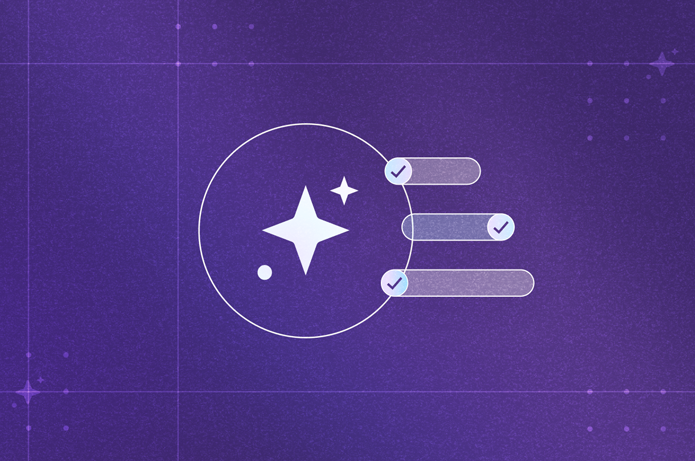Employee Assistance Programs (EAPs) are once the gold standard for supporting employee mental health. But as workforce needs have evolved—and as mental health has become a top-tier business priority—the traditional EAP model hasn’t kept up.
If your current EAP is underutilized, lacks transparency, or fails to deliver measurable outcomes, it’s time to ask: Is this solution still working for us? Or are we simply checking a box?
How mature is your mental health program?
Benchmark your current solution, identify key gaps, and explore best-in-class strategies to elevate mental health outcomes.
What makes a good EAP in 2025?
A modern EAP should deliver far more than an 800-number and a handful of free counseling sessions. Today’s workforce expects mental healthcare that is:
- Personalized: Matching employees with the right provider based on their needs and preferences.
- Accessible: Offering short wait times, digital access, and multilingual, culturally competent providers.
- Measurable: Delivering tracked outcomes tied to business KPIs.
- Integrated: Supporting complex conditions like depression, substance use, trauma, and comorbid medical diagnoses.
Here are a few ways enhanced EAPs differ from traditional EAPs:
Traditional vs. enhanced EAPs
| Feature | Traditional EAP | Enhanced EAP (e.g., Spring Health) |
|---|---|---|
| Utilization | 2–5% | Up to 25%+ |
| Access | Referral-based, phone scheduling | Digital access, direct scheduling |
| Outcomes measured | Rarely | Continuously tracked |
| Provider network | Narrow, inconsistent | Diverse, high-quality, global |
| ROI data | Unavailable | Independently validated (1.9×–4× ROI) |
| Crisis support | Hotline only | Proactive, clinically driven response |
| Business integration | Siloed from broader health strategy | Linked to claims, productivity, retention |
Why your EAP might be falling short
Many organizations are experiencing rising costs and increased burnout—despite offering a mental health benefit. That’s often a symptom of a legacy EAP that’s not built to solve today’s challenges.
Key shortcomings of legacy EAPs:
- Long wait times and scheduling delays
- Lack of provider diversity or specialization
- Low employee awareness and trust
- No return on investment (ROI) or outcomes reporting
- Inability to address moderate-to-severe needs
The result: Employees either avoid care altogether or seek expensive, out-of-network treatment through the health plan—driving up employer healthcare costs.
Common warning signs
| Signal | What it could indicate |
|---|---|
| Persistent low EAP utilization | Lack of trust, awareness, or access |
| Spike in short-term disability claims | Unaddressed mental health crises |
| Increased ER visits without clear diagnoses | Stress, anxiety, or SUD episodes |
| Escalating pharmacy costs | Antidepressants and ADHD meds underreported |
| Higher turnover or presenteeism | Burnout, disengagement, or unresolved conditions |
When is it time to evaluate your EAP?
It’s time to re-evaluate your EAP if any of the following apply:
- Your healthcare costs are rising faster than benchmark.
- Your disability and leave claims have increased.
- Your workforce is showing signs of burnout, disengagement, or turnover.
- You can’t measure the ROI or impact of your mental health benefits.
- Your EAP still operates in a reactive, analog model.
A helpful tool for this assessment is our Mental Health Benefits Maturity Model, which defines four levels of benefit strategy:
| Maturity Stage | Description |
|---|---|
| 1. Checking the Box | Minimal investment, no measurement, limited access |
| 2. Building | Adds digital tools, but inconsistent outcomes |
| 3. Developing | Structured care with some ROI tracking |
| 4. Leading | Precision mental health, measurable ROI, proactive engagement |
How do you evaluate your EAP program? A checklist for HR leaders
Start by asking the right questions of your EAP solution, benefits consultant, or carrier. When possible, ask for the following to be benchmarked against other similar-sized organizations in your industry or location.
EAP evaluation checklist
Utilization & Access
- What is our actual utilization rate?
- What’s the average wait time for care?
- Do employees have access to culturally competent, diverse providers?
Outcomes & ROI
- Are you tracking symptom improvement (e.g., depression, anxiety)?
- Do you offer independently verified ROI data?
- Can we tie EAP usage to claims reduction or productivity gains?
Claims Integration
- Can you identify behavioral health-related pharmacy claims?
- Is SUD tracked separately from general mental health?
- Are high-cost claimants receiving behavioral health support?
Crisis & Complexity
- Do you provide real-time crisis support?
- Can you support comorbid and complex conditions?

The business case for an enhanced EAP
It’s not just about offering care—it’s about offering the right care. And the financial case is clear:
- $1,070 in net savings per engaged employee in the first year
- Up to 4:1 ROI when behavioral health is integrated into care strategy
- 79% improvement in depression symptoms after three sessions with Spring Health
Turning a “check-the-box” EAP into a strategic lever
Mental health is no longer just a “nice-to-have.” It’s now central to:
- Containing health plan costs
- Improving retention and engagement
- Reducing costly leaves and disability
- Demonstrating values-aligned leadership
The bottom line? A modern EAP isn’t just a benefit. It’s a cost-control, productivity-driving business strategy.
FAQs
What is an EAP assessment?
An EAP assessment is a structured review of your Employee Assistance Program’s performance, including utilization, access, provider quality, outcomes tracking, and alignment to strategic goals. It helps identify gaps, inefficiencies, and opportunities to improve mental health support and ROI.
What important things should be included in an EAP?
A high-performing EAP should include:
- Easy digital access and direct scheduling
- Diverse, licensed provider network
- Real-time crisis support
- Outcomes tracking and ROI metrics
- Integration with medical claims and chronic care
- Multilingual and culturally competent support
How is an enhanced EAP different from a traditional one?
Enhanced EAPs focus on speed, personalization, outcomes, and business impact. Traditional EAPs often serve as basic compliance tools, with limited engagement and little measurable value.
What does EAP stand for?
EAP stands for Employee Assistance Program. It’s an employer-sponsored resource to support employees with mental health, stress, financial, legal, and family issues.
Ready to evaluate your EAP?
If your current program feels like it’s “just there,” it may be time to level up.
Spring Health offers personalized, precision-driven mental health support that delivers proven results for your people and your bottom line. Let’s talk about what’s next.

Liz Crain is a licensed professional counselor with experience in clinical practice, behavioral health consulting, and program development. She now serves as a full-time provider at Spring Health, where she helps individuals access personalized, evidence-based care to support their mental wellbeing.


.png)
.png)
.png)




.png)




.png)


.png)



